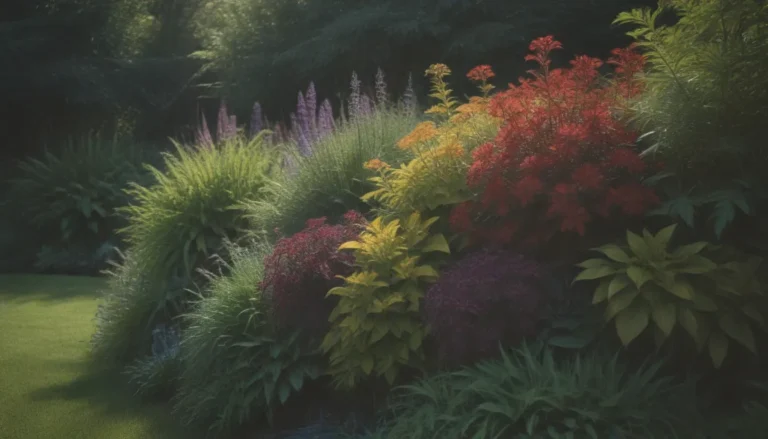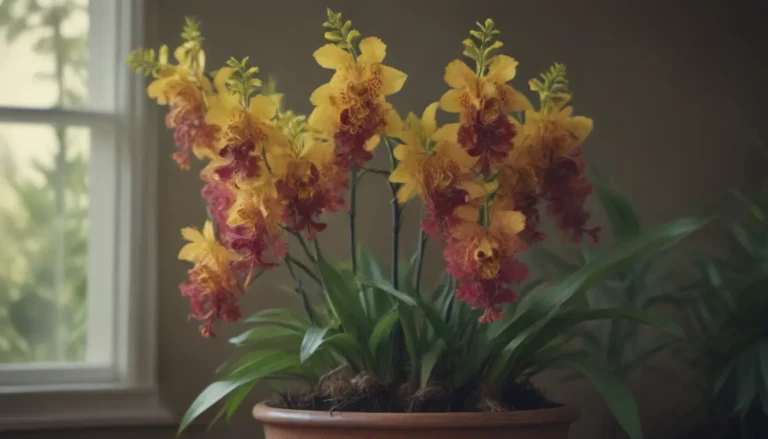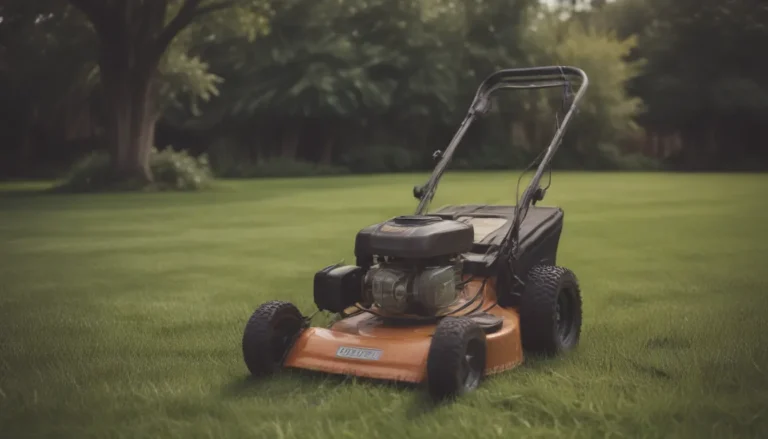The Ultimate Guide to Growing and Caring for Moringa Plants

If you’re a plant enthusiast looking to add something unique and beneficial to your garden, consider growing moringa plants. These fast-growing, deciduous trees are not only beautiful but also have a long history of nutritional and medicinal uses. Moringa trees, also known as drumstick trees or ben oil trees, are native to India and Bangladesh, where they are often referred to as the “miracle tree” due to their numerous health benefits.
In this comprehensive guide, we’ll walk you through everything you need to know about growing and caring for moringa plants. From light requirements to pruning tips, propagating techniques, and common pests and diseases, we’ve got you covered. Whether you’re a seasoned gardener or just starting, this article will provide you with all the information you need to successfully cultivate moringa plants.
Moringa Facts and Benefits
Before diving into the care requirements of moringa plants, let’s take a closer look at some interesting facts about these remarkable trees:
- Nutrient Powerhouse: All parts of the moringa tree, from the seeds to the leaves to the roots, are edible and rich in nutrients and antioxidants. In fact, moringa is often compared to spinach in terms of its nutritional value.
- Varieties: There are over 13 species of moringa, each with its unique characteristics. Some popular species include M. oleifera, M. peregrina, and M. stenopetala.
- Growth Rate: Moringa plants are known for their fast growth, with some varieties reaching up to 15 feet annually.
- Medicinal Uses: Moringa has been used in traditional medicine for centuries and is believed to have multiple health benefits, according to studies published in the National Center for Biotechnology Information.
Moringa Care Requirements
To ensure the health and vitality of your moringa plants, it’s essential to provide them with the proper care. Here are some key requirements to keep in mind:
Light
Moringa plants thrive in bright, sunny locations that receive direct sunlight for most of the day. Lack of adequate sunlight can stunt growth, so make sure to place your moringa tree in a spot that gets plenty of sun.
Soil
While moringa trees can adapt to a variety of soil types, they prefer well-draining, sandy soils. Avoid planting them in compacted soil or areas with excess moisture, as this can lead to root rot.
Water
Keep the soil of your moringa plants consistently moist but not wet. Regular, deep watering is preferred over frequent, light watering. Once established, moringa plants are drought-tolerant but require more water during their early growth stages.
Temperature and Humidity
Moringa plants thrive in temperatures between 77 and 95 degrees Fahrenheit but can tolerate extreme heat as long as they are provided with shade. They are sensitive to cold temperatures and may need to be brought indoors during winter months in cooler climates.
Fertilizer
When planting moringa trees, add compost to the soil for additional nutrients. A light application of a general, all-purpose fertilizer can help support growth. Regularly amending the topsoil with compost or manure is also beneficial for moringa plants.
Types of Moringa
With over 13 species of moringa plants to choose from, you have plenty of options when selecting a variety for your garden. Whether you prefer a dwarf variety or a fast-growing species, there’s a moringa plant to suit your needs.
Some common types of moringa include M. oleifera, M. concanensis, and M. drouhardii. Each species has its unique characteristics and growth habits, so do some research to find the one that best fits your gardening goals.
Pruning Techniques
Regular pruning is essential for maintaining the health and shape of your moringa plants. By trimming back branches and encouraging new growth, you can ensure a bountiful harvest of edible leaves, flowers, and pods. Here are some tips for proper pruning:
- Tools: Use sharp pruning shears or loppers to make clean cuts and prevent damage to the plant.
- Timing: Prune moringa plants in the spring or early summer when they are actively growing.
- Seedling Pruning: Trim back excess growth on young moringa plants to encourage branching and leaf production.
- Mature Tree Pruning: Keep mature moringa trees at a manageable height by pruning back tall branches and encouraging lower growth.
Propagating Moringa
If you’re interested in propagating moringa plants, there are several methods you can try, including using cuttings or seeds. Propagating with cuttings ensures that you’ll get an exact replica of the mother tree and can help accelerate the growth process. Here’s how to propagate moringa plants:
- Outdoor Propagation: Plant moringa cuttings directly in the soil and ensure they receive adequate sunlight and water.
- Indoor Propagation: Start moringa cuttings in pots indoors to protect them from harsh weather conditions and monitor their growth more closely.
Growing Moringa From Seed
Moringa seeds are easy to grow and have a high germination rate. Plant fresh seeds directly in the garden for best results, as transplanting can be challenging due to the plant’s taproot system. Here’s how to grow moringa from seed:
- Outdoor Planting: Sow moringa seeds directly in the soil and provide them with ample sunlight and water.
- Indoor Planting: Start moringa seeds indoors in pots to protect them from the elements and ensure a better germination rate.
Potting and Repotting Moringa
If you’re growing moringa plants in containers, it’s essential to repot them as they grow to prevent root binding and ensure proper growth. Choose a large pot with adequate drainage to accommodate the plant’s deep taproot system. Here’s how to pot and repot moringa plants:
- Initial Potting: Start moringa plants in 6- to 7-inch pots and gradually move them to larger containers as they grow.
- Repotting: Transfer moringa plants to a 30-inch pot or larger to provide them with enough space for healthy growth.
Overwintering Tips
If you live in a cold climate, it’s crucial to take steps to overwinter your moringa plants and protect them from frost. Bring potted moringa trees indoors before the first frost and place them in a sunny, warm location during the winter months.
Common Pests and Plant Diseases
While moringa plants are generally resistant to pests and diseases, there are a few issues to watch out for. Termites, armyworms, aphids, and stem borers can sometimes affect moringa trees. Additionally, root rot, fruit rot, and canker disease are common problems that can impact the health of your plants.
- Termites: Mulch around the base of the tree with castor oil plant leaves or other natural repellents to deter termites.
- Root Rot: Ensure proper drainage to prevent root rot from affecting your moringa plants. Treat with a copper-based fungicide if necessary.
- Fruit Rot: Prune affected branches and treat with a fungicide to prevent fruit rot from spreading.
Common Problems With Moringa
If you encounter issues with your moringa plants, such as yellowing leaves, dying branches, or poor growth, there are several steps you can take to address the problem. Check water levels, nutrient levels, and sunlight exposure to ensure your moringa plants are healthy and thriving.
- Yellowing Leaves: Adjust watering and nutrient levels to address yellowing leaves and improve plant health.
- Dying Branches: Improve soil drainage to prevent root rot and dying branches.
- Poor Growth: Provide adequate sunlight and nutrients to stimulate growth and address any cold weather issues.
In conclusion, growing and caring for moringa plants can be a rewarding experience for any gardener. By following the tips and techniques outlined in this guide, you can enjoy a bountiful harvest of nutritious leaves, flowers, and pods from your moringa trees. Whether you’re a beginner or experienced gardener, adding moringa plants to your garden is a great way to enhance your green space and reap the numerous health benefits they offer.
Remember to provide your moringa plants with ample sunlight, well-draining soil, and regular watering to ensure their continued growth and vitality. With proper care and attention, you can enjoy the beauty and benefits of moringa trees in your garden for years to come.





